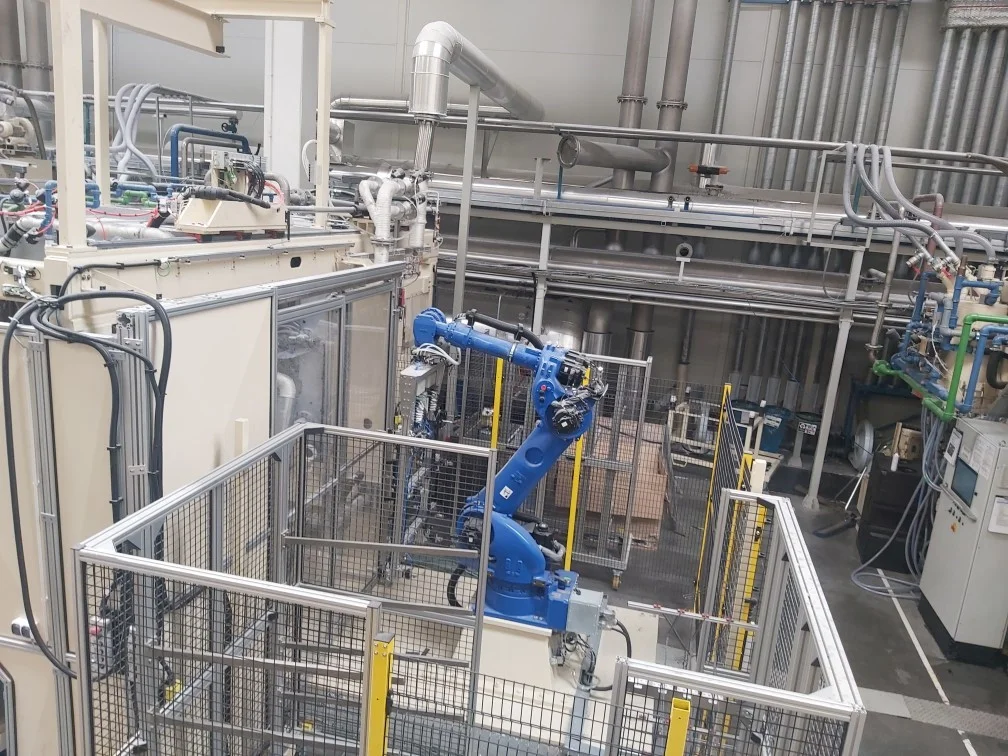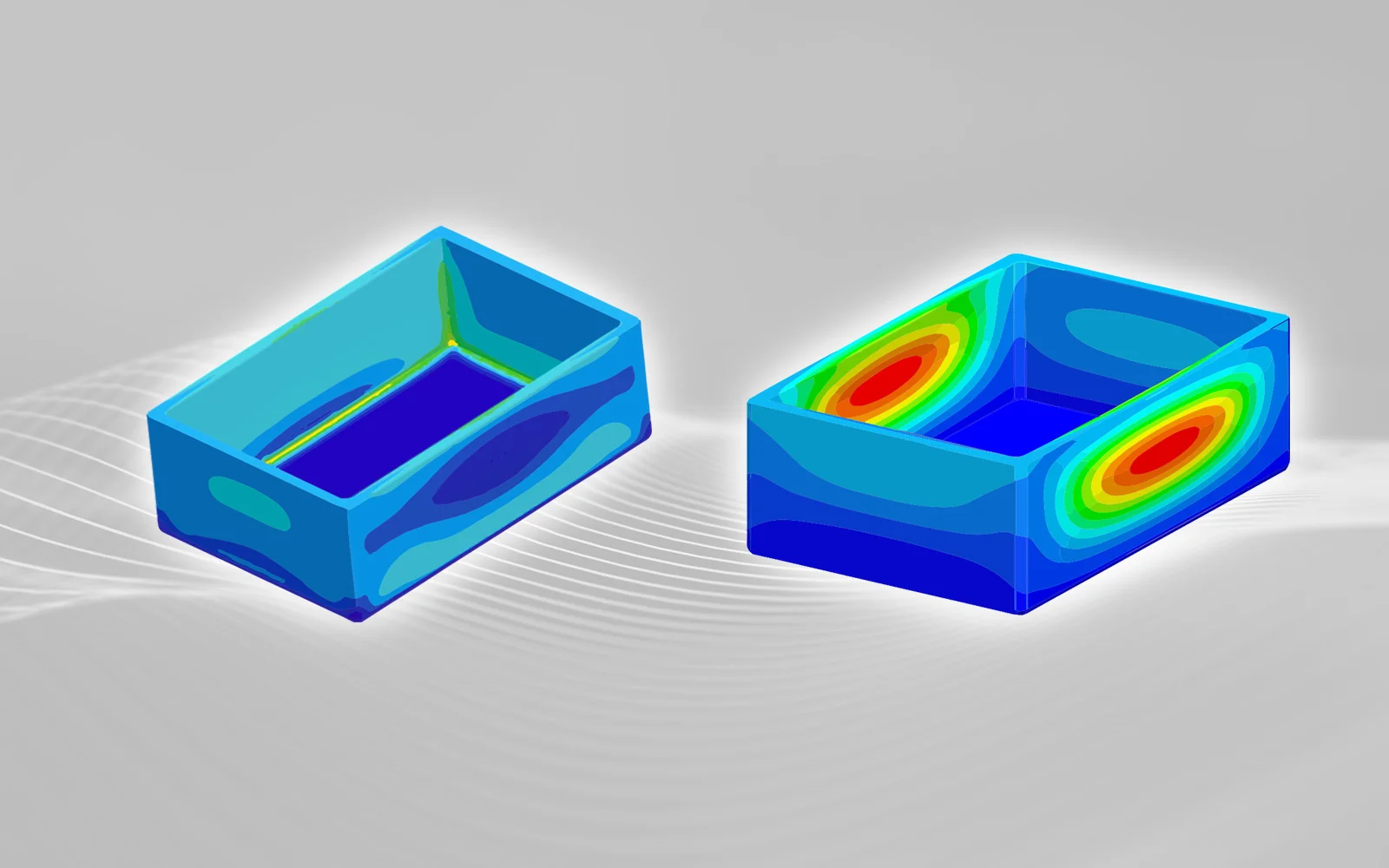5G technology could revolutionize the way cars are manufactured. Real-time data exchange allows not only faster recording of production data, but also instant optimization of the entire process. In the future, the 5G standard may also enable the design of more efficient vehicles with entirely new features.
What is 5G technology and how is it developing?
5G technology is the latest generation of wireless networks that provides greater reliability, efficiency and, above all, much faster data speeds. This creates entirely new opportunities for developing innovative services in various areas of Industry 4.0. The so-called fifth generation of mobile technology is expected to eventually replace the older 4G/LTE12 standard. Today, the global development of 5G technology is dynamic, but it varies from continent to continent. The GSMA Mobile Economy Europe 2022 report indicates that 5G network coverage in Europe will increase to 70% by 2025 from 47% in 2021. By comparison, 5G network coverage in the United States is expected to be 98% by the same time. South Korea and China remain the global leaders in this regard.
5G technology – what is it exactly?
According to the International Telecommunications Union (ITU) specification, the characteristics of the 5G standard correspond to data transfer speeds of up to 20Gbps for downloads and up to 10Gbps for uploads with a maximum latency of up to 4ms. The possible network load is up to 1 million devices per square kilometer. An important feature of the standard is its stability – the connection is maintained even when moving at speeds of up to 500 km/h. Compared to 4G, 5G technology uses additional frequency bands, such as L Band (low frequencies up to 300MHz), Sub-6 (between 3,000MHz and 6,000MHz) and mmWave (so-called millimeter waves in the range from 30GHz to 300 GHz). It relies on advanced technologies such as beamforming, which allows the signal to be directed toward the receiving device and Massive MIMO (Multiple Input, Multiple Output), which involves the simultaneous use of multiple antennas and receivers.
Application of 5G in industry – does 5G imply a revolution in manufacturing?
The implementation of 5G networks means ultra-low latency and multi-gigabit data transfer speeds, which can accelerate production, improve efficiency and even enable new business models. Automotive parts manufacturers and vehicle manufacturers will be able to take greater advantage of the benefits provided by the Industrial Internet of Things (IIoT) for example. Machines equipped with sensors can collect and analyze data in real time, and then use it to optimize the mass production process. Smart robots communicating with each other can reduce errors and streamline energy consumption, which translates into considerable cost savings. Instant communication with devices in a smart factory is also associated with shorter turnaround times and lower costs, which means greater flexibility at different stages of car production and freedom of resource planning within the company. Some manufacturers are already taking advantage of the improvements that 5G technology offers. Volkswagen at its Wolfsburg plant, for example, is using it to wirelessly transmit software and test autonomous cars. Ford at its Essex County plant has set up a wireless communication network between operators and machines, where communication is carried out via smartphone.
5G network coverage – what does it depend on?
The 5G range depends on a number of factors, such as the type of infrastructure, devices used and terrain conditions, among others. 5G networks require completely new technical facilities, including new types of base stations and picocells (short-range wireless access points) that amplify the signal. Each base station must be connected to a fiber optic cable to achieve the designed speed. In addition, to take advantage of the 5G network, compatible devices are necessary. At the moment, only some of them support all 5G frequency bands, which, in turn, could possibly affect range and signal performance. As with any other technology, 5G coverage can also depend on terrain conditions, including the type of local development and the variability of radio wave propagation conditions. As a result, the 5G coverage map can vary greatly from location to location.
5G network architecture – what are its advantages and disadvantages?
The 5G network architecture has many advantages. It uses new transmission technologies and different frequencies to improve performance and range. This allows it to support a large number of devices, has high throughput and low latency. Disadvantages certainly include the rather high cost of implementation and maintenance, as well as potential problems with 5G range in some areas. Due to insufficient infrastructure, its implementation can be quite complex. This means that the change to a unified data transmission standard will not happen overnight. For some time, all devices will have to have the function to support both 5G and 4G technologies.
How will 5G technology change the automotive industry?

5G technology can revolutionize the automotive industry in a number of ways, and its potential has yet to be fully explored. It will certainly accelerate the development of robotization and production automation. With seamless communication between machines, it can, for example, make production faster and more flexible or enable the implementation of fully autonomous vehicles. In the future, 5G technology will contribute to the creation of more advanced security and navigation systems, which will be able to benefit from a fast and reliable connection.
The potential of 5G in the development of autonomous vehicles
The potential of 5G technology is discussed especially in the context of the production and development of autonomous car technologies. They generate considerable amounts of data that must be transmitted and processed in real time. With a hundredfold increase in data transfer speed, the deployment of 5G networks will enable safe navigation in autonomous cars. The technology offers up to two hundred times shorter waiting time between sending and receiving data, as compared to a 4G network, resulting in a response time of about one millisecond!
Navigation on the car windshield
Thanks to 5G technology and the development of augmented reality (AR), a car's front and side windows can turn into screens that present information from different sources. For example, they can simultaneously display a message from a nearby restaurant about the last available table and help overtake another vehicle safely. With 5G, data analytics and artificial intelligence, cars could gain new functionality. They will, for example, plan weekend trips, assist users in daily activities, and at the same time assure their safety.
New horizons of design using 5G networks

5G technology has had great impact on the development of new technologies to support car design, such as augmented reality (AR), virtual reality (VR) and digital twins, among others. With fast and reliable data transfer, it is possible to achieve seamless visualization and connect a large number of devices. This way, for example, multiple users can participate concurrently in the simulation of a part or vehicle in a real, interactive environment. At Knauf Industries, we are prepared for the challenges posed by the 5G network and can successfully collaborate with smart factories. For example, we are already creating computer simulations of automotive parts in CAE software. With a 3D scanner and computer-aided design (CAD), we can faithfully digitally reproduce and improve existing parts. At Knauf Automotive, the innovative technologies of foamed plastic molding, plastic injection molding and 2K two-component injection molding make it possible to cost-effectively manufacture any type of component according to an individual design. We are looking forward to working with you!